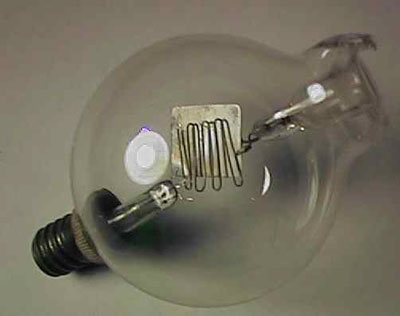More history of the vacuum tube: The Audion
To continue with the history of the vacuum tube, we’ll have to talk about the Audion.

Even though crystal detectors were very successful, several people continued to investigate whether they could develop vacuum tube technology whilst avoiding any infringement of Fleming’s patent. It was de Forest, an American who had been working on a variety of areas associated with wireless, who made the next and crucial vacuum tube development. He had been researching Fleming’s diode valve. Having investigated the idea, he took out some patents for improvements in 1905 and 1906 where he introduced a third electrode. Then, in 1907, he took out a patent for a three-electrode device where the additional electrode was placed between the anode and cathode. This electrode had a fine grid structure. He called this device his Audion which he used as a leaky grid detector, not realizing its full potential.
It was not until 1911 that the vacuum tube was used as an amplifier. After this discovery people were quick to try to exploit it. De Forest built an amplifier using three Audions and demonstrated it to the telephone company A.T & T. Although the performance was poor they saw its potential and soon started to build repeaters using vacuum tubes which they had improved. Naturally as soon as the tube was used as an amplifier, people were quickly able to use it as an oscillator. Indeed, one of the problems encountered was difficulties in preventing oscillations. The cause of those oscillations was the high values of grid anode capacitance.
Improvements
In these early days of vacuum tubes, their operation was not fully understood and there were a number of misconceptions. For example: it was thought that some gas molecules were needed in the envelope for it to operate correctly. These tubes were known as “soft” tubes. In 1915, an American scientist named Langmuir proved that gases were not required in the envelope, on the contrary. Soon after this discovery new highly evacuated tubes known as “hard” tubes were produced and these exhibited far better levels of performance.